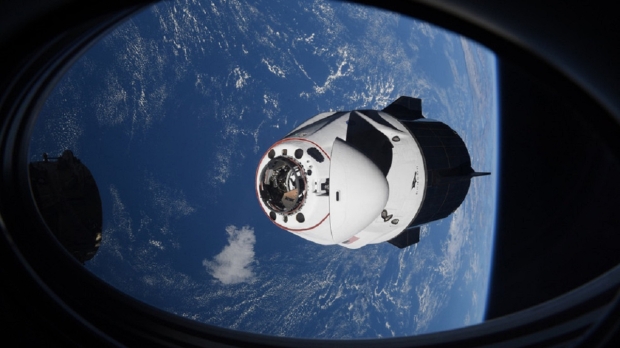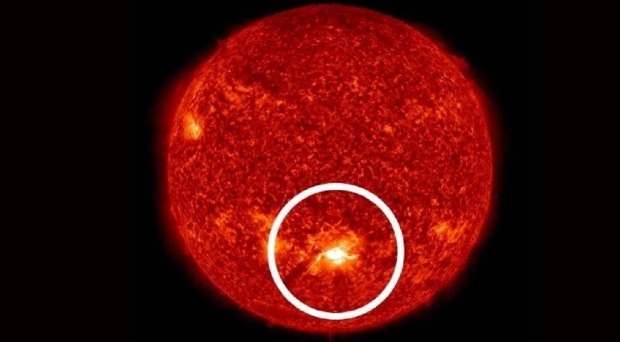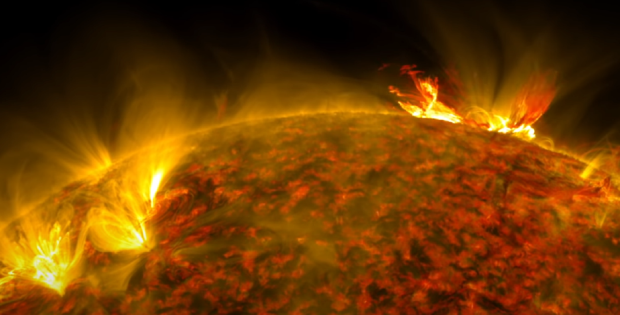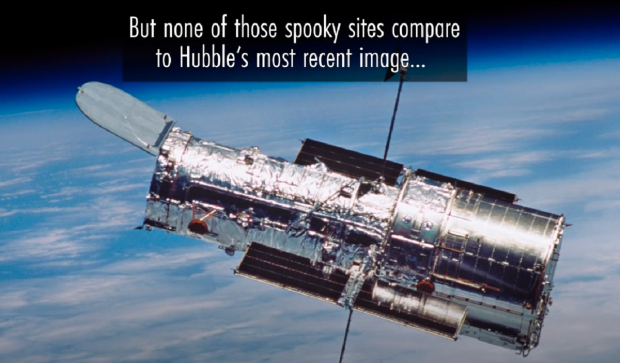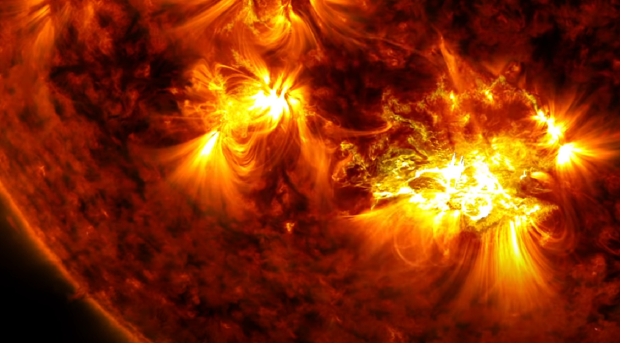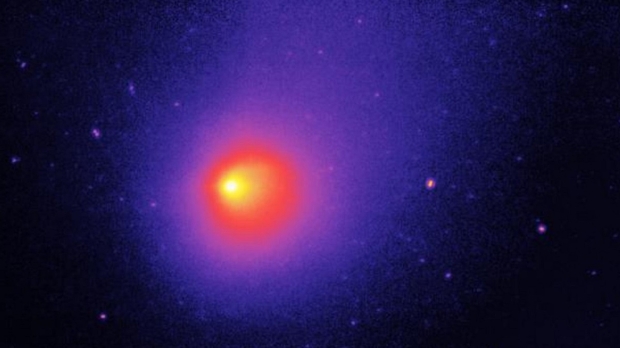Science, Space, Health & Robotics News - Page 252
NASA releases the first 3D view of Jupiter's turbulent atmosphere
In a new blog post, NASA has detailed the results yielded from the Juno spacecraft's observations of the solar system's largest planet.
In the post, the space agency states that its Juno probe that is currently orbiting the planet Jupiter has provided insight into the inner workings of the gas giant's atmosphere. From the observations, researchers were able to derive the first 3D map of Jupiter's atmosphere, the results have been published throughout several papers in the two recent issues of the Journal of Geophysical Research: Planets and Geophysical Research Letters.
Scott Bolton, the principal investigator of Juno from the Southwest Research Institute in San Antonio and lead author of the Journal Science paper that explores the depth of Jupiter's vortices, said, "Previously, Juno surprised us with hints that phenomena in Jupiter's atmosphere went deeper than expected. Now, we're starting to put all these individual pieces together and getting our first real understanding of how Jupiter's beautiful and violent atmosphere works - in 3D."
Continue reading: NASA releases the first 3D view of Jupiter's turbulent atmosphere (full post)
NASA asked SpaceX Endeavor crew not to use the toilet on the way home
Following a leak incident with the all-civilian Inspiration4 crew that recently launched with SpaceX, NASA has asked astronauts returning back from the ISS not to use the toilet.
NASA's Commercial Crew program manager, Steve Stitch, said on Friday that following a detected leak during the Inspiration4 mission that included just civilians, that NASA astronauts Shane Kimbrough and Meghan McArthur, Akihiko Hoshide of Japan's JAXA, and Thomas Pesquet of the ESA to explore "other means" of disposing of their bodily fluids. Technicians detected the leak by discovering one of the glued joints in the waste tank broke, which resulted in urine from the tank leaking into the fan.
Stitch said, "We have other means to allow the crew to perform the functions they need to do... Anytime the crew is suited they use an undergarment in that suit, and it's a short mission coming home." Adding, "Our intent is to not use the system at all for the return leg home because of what we've seen with the fluids we are talking about." The NASA crew that is heading back to Earth from the ISS was scheduled to launch from the floating laboratory on Halloween, but the launch was delayed due to bad weather until November 3 at 1:30 am ET.
Continue reading: NASA asked SpaceX Endeavor crew not to use the toilet on the way home (full post)
Massive Sun solar flare hits Earth, causes crazy phenomenon in the sky
NASA recently confirmed that on October 28, the solar flare was observed on the Sun's lower center and that this flare would result in a large amount of radiation smashing into Earth.
The flare was officially classified as an X-1 flare, with X being the most intense classification given to a flare. Officials predicted that the solar wind produced by the flare would impact Earth on October 30, and while their timing was correct, the intensity wasn't. The coronal mass ejection (CME) from the flare arrived with much less intensity than anticipated, with the majority of the flare actually missing Earth.
While the impact of a CME can cause geomagnetic storms that interfere with satellite, GPS communications, and other signals, they also can cause auroras to appear in the sky. Auroras are the result of the interaction between charged particles from the Sun's solar wind hitting particles in Earth's upper atmosphere. The interaction causes a glow that is visible in the sky. Skywatchers in certain locations around the world were able to spot the gorgeous phenomenon occur in the night sky.
Continue reading: Massive Sun solar flare hits Earth, causes crazy phenomenon in the sky (full post)
Magnets may be the solution to the ever-growing problem of space junk
The space located around Earth is exponentially filling up with junk from rocket parts and broken satellites, and if the issue isn't solved, the polluted space may result in a hindrance to humanity's space exploration.
In 1979 NASA scientist Donald J. Kessler proposed what was dubbed the "Kessler syndrome", which is a scenario that could unfold when the number of objects within low Earth orbit becomes so dense that the likelihood that it increases the the the point where it's more likely further collisions will occur, causing a cascade effect of debris collisions throughout low Earth orbit. Researchers are proposing new ideas to clean up low Earth orbit to prevent this tragic domino effect from happening. One suggestion may be to use magnets that can manipulate the debris.
A new study published in the journal Nature by researchers at the University of Utah details the use of spinning magnets equipped by robots. These robots would be able to push space debris down into Earth's atmosphere, where they would then burn up upon re-entry, removing the need for the robot to collect them physically. The team of researchers was able to demonstrate with the technology that they were able to manipulate debris in six degrees of movement, including rotation.
Continue reading: Magnets may be the solution to the ever-growing problem of space junk (full post)
NASA confirms massive solar flare hits Earth, officials record impact
NASA recently confirmed the existence of a solar flare occurring on the Sun, which resulted in a plasma wave being launched directly towards Earth.
The space agency explained that Sunspot AR2887 erupted, causing a solar flare and a coronal mass ejection (CME) to be shot towards Earth's direction. The solar flare was classified as an X1-class flare, X being the highest categorization that is given to a solar flare. For those that don't know what flares are, they are burst of radiation that can't pass through Earth's atmosphere to harm humans. However, its impact on Earth can cause geomagnetic storms that knock out GPS and radio communications and interfere with satellites.
As for the flare that hit Earth's magnetic field on Oct. 31st at ~10:00 UT, the resulting impact was much less than anticipated as it only caused a G1-class geomagnetic storm. The reason for the weakness, as Spaceweather.com reports, is that majority of the CME missed Earth, which stands as an example that current computer models used to predict the events of the Sun aren't always 100% correct as there are still many unknowns about the Sun and its processes. More simply put, it's difficult to predict the motions of a celestial object located 93 million miles away.
Continue reading: NASA confirms massive solar flare hits Earth, officials record impact (full post)
Sun blast will impact Earth soon, may cause auroras around the world
On October 28, the Sun blasted out an X-1 solar flare causing a coronal mass ejection of charged particles to be launched directly towards Earth.
The X1 classification for this solar flare is the most intense classification that is given to solar flares, and while the flare itself reached Earth only 8.5 minutes after it happened, the resulting coronal mass ejection (CME) is expected to arrive on October 30. While the large swath of charged radiation particles impacting Earth poses no danger to humans on the surface, the interaction in Earth's upper atmosphere can cause geomagnetic storms that can interfere with satellites, radio communications, GPS, and more.
According to NOAA's Space Weather Prediction Center, there is a G3 (strong) geomagnetic storm watch scheduled for October 30. Looking back into what past solar flares have caused on Earth, this specific classification of solar flare has caused auroras to appear in the sky over certain parts of the planet. These auroras are similar to the Northern/Southern lights and can be seen with the naked eye. NASA recommends people who live in Northern US and Canada to keep an eye out for a possible light show that will coincide with Halloween.
Continue reading: Sun blast will impact Earth soon, may cause auroras around the world (full post)
Hubble spotted something 'scary' when looking out into space
NASA has taken to its blog with a new image and video centered around the Hubble Space Telescope and what it has recently snapped an image of.
According to the blog post, which can be found on the NASA website, the Hubble Space Telescope is celebrating Halloween with "creepy celestial sights". The above video posted to the NASA Goddard YouTube channel details Hubble's observation of a "giant space spider-web", which is actually the destruction of the red giant star named CW Leonis, located 400 million light-years away from Earth.
The "cobwebs" are dusty clouds of "sooty carbon engulfing the dying star", and after being created through nuclear fusion in the star's interior, it's thrown out into the void of space around it, providing raw materials for future star formation. CW Leonis is the closest carbon star to Earth, and due to its position and nature, astronomers have a great prospect of understanding how carbon stars interact and evolve with their surroundings. Over the past 15 years, researchers have observed a dip in the brightness radiating out of CW Leonis, which is an extremely small amount of time in astronomical terms.
Continue reading: Hubble spotted something 'scary' when looking out into space (full post)
NASA confirms massive solar flare will hit Earth, arrival time found
NASA has taken to its blogs and social medias to confirm the existence of a massive solar flare headed directly towards Earth.
The solar flare was observed on October 28, and according to NASA, the flare came from the Sun's lower center which is directly facing Earth. At 11:35 a.m EDT, the Sun released the biggest of a series of flares, bursting out a large amount of radiation towards Earth that is expected to arrive very soon. The flare was categorized as an X1-class flare, X being the most intense categorization for solar flares.
The Sun entered Solar Cycle 25, and according to the space agency, this is the second X-class solar flare of the cycle, with the cycle lasting 11 years. Over the duration of the cycle, the Sun will go through active and quiet periods until it reaches its solar maximum, where its magnetic poles will flip.
Continue reading: NASA confirms massive solar flare will hit Earth, arrival time found (full post)
'Whole new hidden world' found below Earth's surface
Researchers thought that Earth's inner core was "solid," but new research suggests that it may be closer to a mush than a solid.
A new study published in the journal Physic of the Earth and Planetary Interiors on September 20 details that the planet's inner core can range from being hard to a semisoft liquid metal. According to Jessica Irving, a seismologist at the University of Bristol in England and not involved in the aforementioned study, "The more that we look at it, the more we realize it's not one boring blob of iron. We're finding a whole new hidden world."
As for the researchers behind the study, they were measuring the seismic waves that are created by large earthquakes. These quakes travel from one side of the globe to the other. Recording these massive vibrations in the form of straight-line compressional waves and undulating shear waves using special instruments, researchers are able to recreate a picture of what the inner planet looks like.
Continue reading: 'Whole new hidden world' found below Earth's surface (full post)
Object flying at 26,000 mph through our Solar System spotted
In a recent article for Spaceweather.com, an astronomer described an object seen traveling at 26,000 mph as a "giant space volcano".
While this description isn't officially recognized, it may be the best way to describe the comet named 29P. This comet is constantly spewing "cryomagma" into space and is certainly stretching our definitions of what we call a "comet". 29P measures 37 miles in diameter It is a massive ice ball with ice volcanoes on its surface that erupt around 20 times a year. The strange comet was first discovered back in 1927, and its eruptions have been documented for quite some time. However, 29P seems angrier than ever.
Arizona amateur astronomer Eliot Herman was observing the comet and recorded four eruptions in quick succession in late September. Dr. Richard Miles of the British Astronomical Association (BAA) told Spaceweather.com, "The current outburst, which began on Sept. 25th, appears to be the most energetic of the past 40 years." Adding, "within a span of only 56 hours, four eruptions took place in quick succession, creating a 'superoutburst.'"
Continue reading: Object flying at 26,000 mph through our Solar System spotted (full post)



